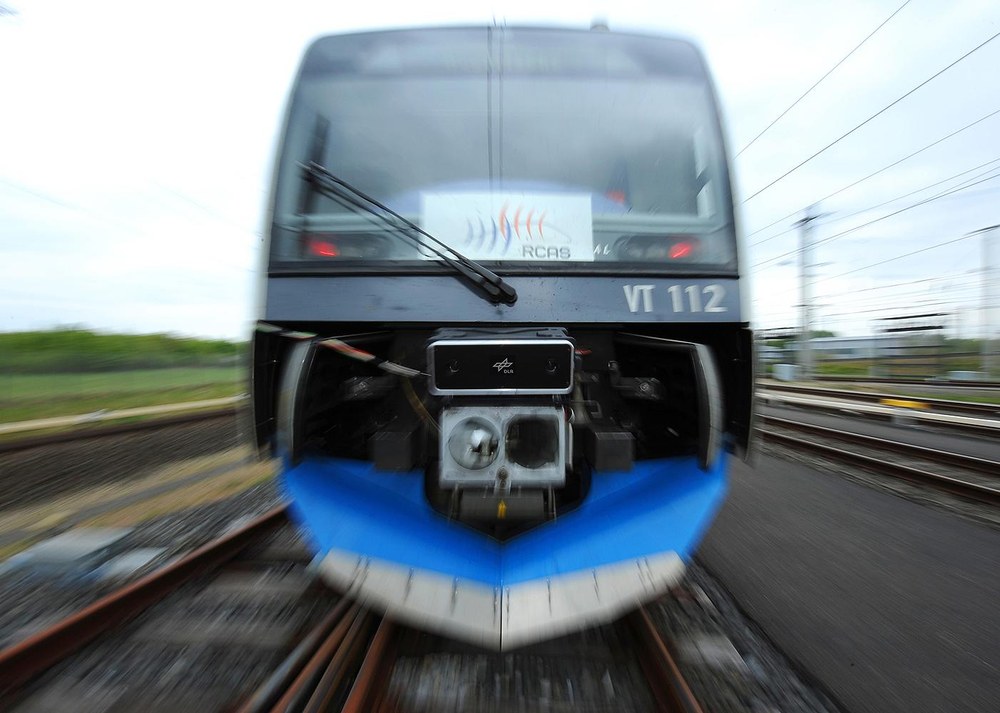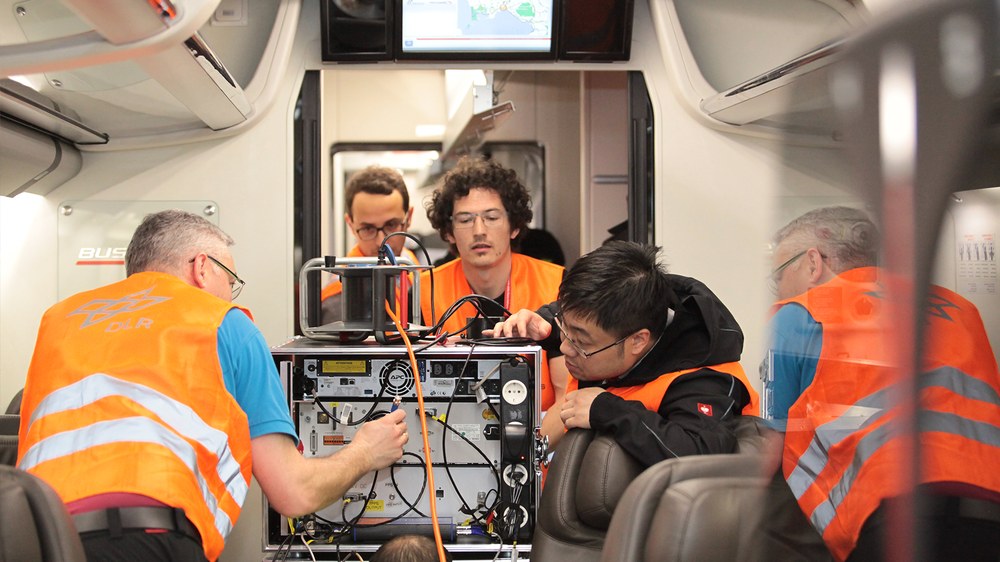Intelligence on Wheels
Dr. Thomas Strang und Dr. Andreas Lehner entwickelten am Institut für Kommunikation und Navigation ein neuartiges Kollisionsvermeidungssystem für Züge (RCAS = Rail Collision Avoidance System).
As part of this project, DLR developed a new type of collision warning system for trains. At the heart of this technology are its communication and positioning components, which have already been introduced to rail operators in Germany and the Czech Republic via the DLR spin-off "„Intelligence on Wheels“. These are installed in the driver's cab of the train and function independently of any rail infrastructure. The rail vehicles equipped with the system exchange information such as position, direction of travel and speed at regular intervals. Based on the data, the train driver is warned early and reliably before a collision occurs.
The relevant information, for example about position and speed, planned routing or loading gauge violations, is exchanged via infrastructure-free train-to-train communication. The system evaluates the situation and suggests solutions to the driver in critical situations or intervenes in the braking behavior so that the trains come to an early stop if there is a risk of collision.
In the RCAS project, scientists and engineers from two other DLR institutes worked together with scientists from the Institute of Communications and Navigation, who are developing the actual communication process under railway-specific conditions: The Institut für Verkehrssystemtechnik in Braunschweig answered the railroad operational questions. It adapted the jointly developed concept to the boundary conditions and railroad operational characteristics and developed it further until the components were integrated into a test vehicle. Employees of the Institut für Optische Sensorsysteme in Berlin-Adlershof supplemented the RCAS system with optical subsystems, for example to monitor obstacle clearance on the track.

Your consent to the storage of data ('cookies') is required for the playback of this video on Youtube.com. You can view and change your current data storage settings at any time under privacy.

Your consent to the storage of data ('cookies') is required for the playback of this video on Youtube.com. You can view and change your current data storage settings at any time under privacy.
